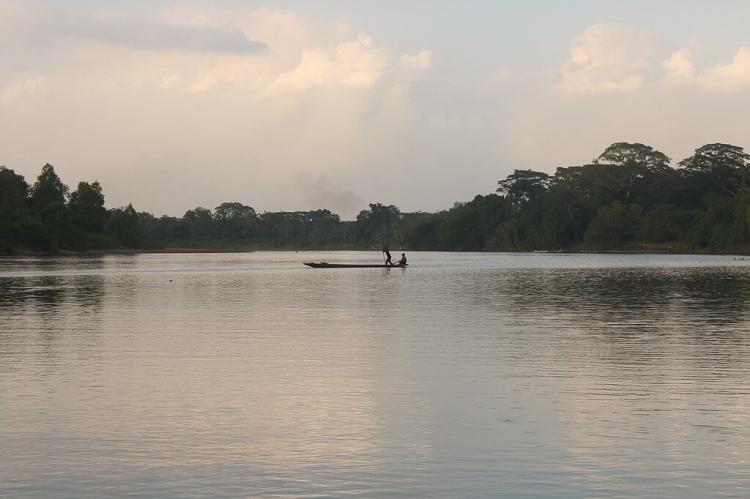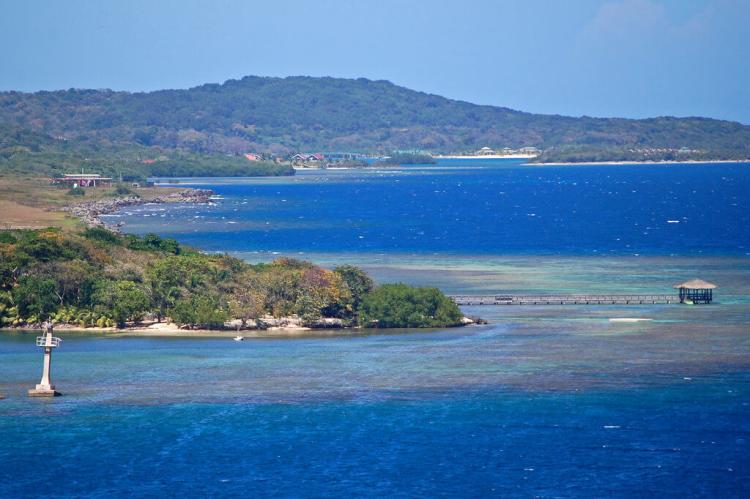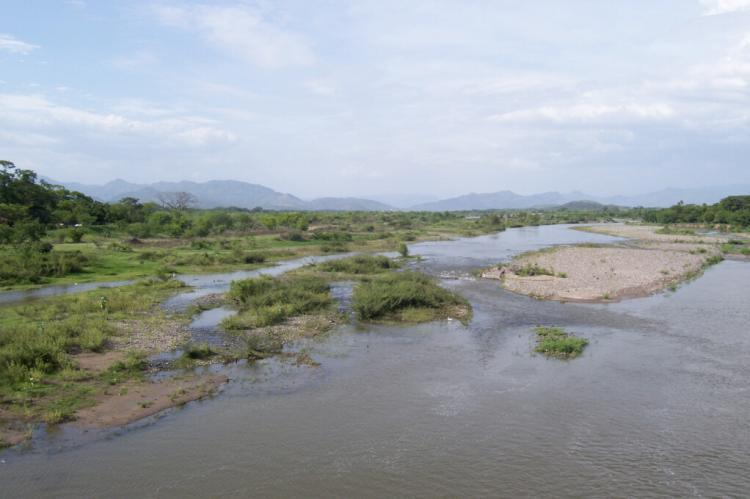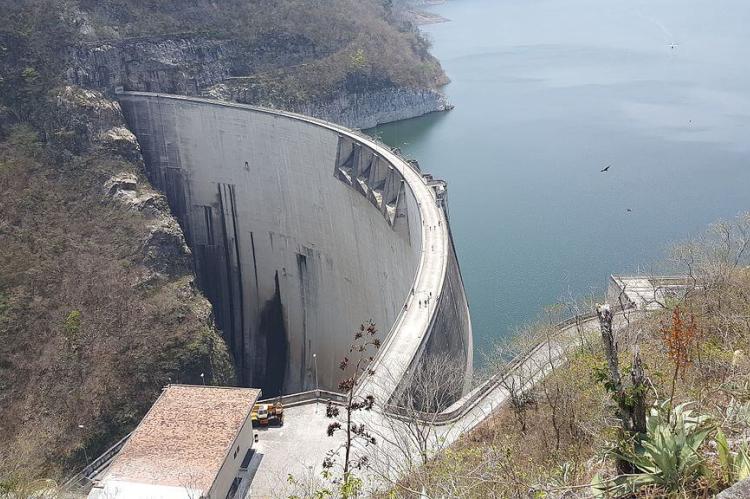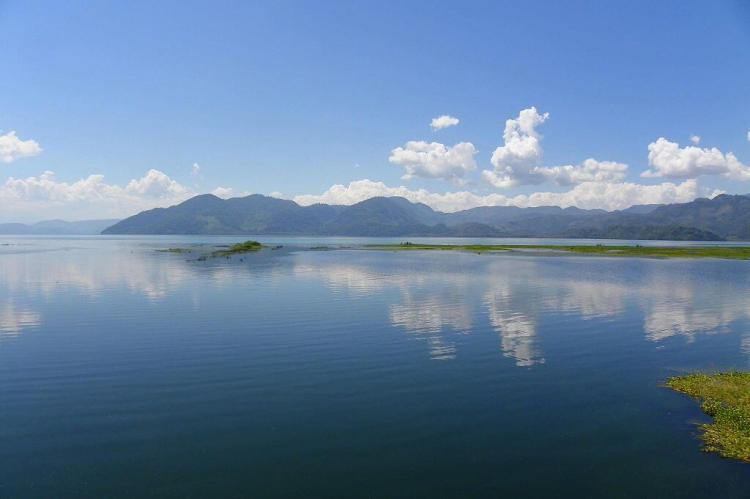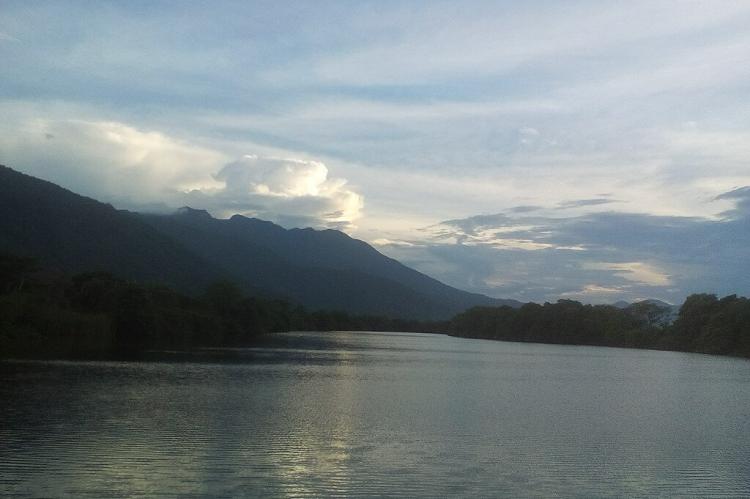Water Bodies of Honduras
Honduras has striking water bodies that add to its beauty, biodiversity, and economy. The northern coast lies on the Caribbean Sea, and the Gulf of Honduras is a vital transport route. Its bays, lagoons, and significant rivers contribute to its ecological balance and support economic activities.
Water Bodies of Honduras
Honduras has a rich diversity of bodies of water that significantly contribute to its natural beauty, biodiversity, and economy. The northern coastline of Honduras is bordered by the Caribbean Sea, which has several notable features. The Gulf of Honduras, a vast body of water shared by Honduras, Belize, Guatemala, and a portion of Mexico, acts as a vital transportation route for shipping and trade.
The country also has picturesque bays and lagoons, such as Trujillo Bay and Laguna de Alvarado, which offer serene coastal landscapes and support various marine life. Moving inland, Honduras has notable rivers that traverse the nation's diverse landscapes. The Ulúa River, the longest river in Honduras, is essential for irrigation and transportation, while the Patuca River meanders through dense rainforests, supporting a wealth of biodiversity.
Honduras' largest natural lake, Lake Yojoa, is located in the western part of the country. The lake is surrounded by lush vegetation and is a significant freshwater resource for local communities and wildlife. These bodies of water contribute to the country's ecological balance and natural beauty and play essential roles in supporting various economic activities, such as fishing, agriculture, and tourism.
Gulfs, Bays, and Coastal Lagoons
Honduras's gulfs, bays, and coastal lagoons offer a mix of ecological importance, natural beauty, and opportunities for tourism and economic activities. They are vital to the country's coastal ecosystems and contribute to its rich biodiversity and cultural heritage.
Gulf of Honduras: The Gulf of Honduras is an enormous and vital gulf located along the Caribbean coast in the northern part of the country. Honduras, Belize, Guatemala, and some of Mexico share it. The Gulf of Honduras is a significant transportation route for shipping and trade, and its coastal areas are known for their beautiful beaches and thriving marine life.
Gulf of Fonseca: The Gulf of Fonseca is a relatively small gulf in southern Honduras, shared with El Salvador and Nicaragua. It is known for its picturesque landscapes and diverse ecosystems, including mangrove forests and critical marine habitats. The Gulf provides a significant fishing ground for local communities and supports various economic activities.
Trujillo Bay: Trujillo Bay is a large bay near Trujillo in the northeastern part of Honduras, near Trujillo. The bay's coastline is known for its beautiful beaches and historical significance. It was one of the first places Christopher Columbus landed in the Americas during his fourth voyage. Today, Trujillo Bay attracts tourists and water sports enthusiasts.
Tela Bay: Tela Bay is located in northern Honduras, near the town of Tela. The bay is known for its natural beauty, with palm-fringed beaches and clear waters. It is a popular destination for beachgoers and tourists seeking a tranquil coastal experience.
Caratasca Lagoon: Caratasca Lagoon is a large coastal lagoon located in the department of Gracias a Dios in eastern Honduras. It is part of the Caribbean Sea and is an essential habitat for various marine species, including fish, birds, and crustaceans.
Cuyamel Lagoon: Cuyamel Lagoon is a coastal lagoon in the Cortés department near Omoa. The lagoon and its surrounding wetlands are essential for supporting diverse bird species and marine life. It also plays a role in local fishing and aquaculture activities.
Alvarado Lagoon: Alvarado Lagoon is situated in the department of Santa Bárbara, near the town of Alvarado on the north coast of Honduras. The lagoon and its surrounding wetlands are listed on the List of Wetlands of International Importance for their ecological value and support for various bird species and aquatic life.
Laguna de Guaimoreto: Laguna de Guaimoreto is a coastal lagoon in the Colón department. It is part of the Cuero y Salado Wildlife Refuge, a protected area for its biodiversity and ecological importance. The lagoon and its mangrove forests are habitats for various wildlife, including manatees, birds, and fish.
Notable Lakes and Lagoons
Honduras's notable lakes and lagoons contribute to the country's ecological diversity and support various wildlife and plant species. They also offer opportunities for ecotourism, fishing, and other recreational activities.
Lake Yojoa: Lake Yojoa is the largest natural lake in Honduras and is located in the western part of the country, between the departments of Cortés and Santa Bárbara. It is surrounded by lush vegetation and is a popular destination for ecotourism and birdwatching. The lake's waters support various fish species, making it an essential resource for local fishermen and the aquaculture industry.
Lake El Cacao: Lake El Cacao, also known as Laguna El Cacao, is a small freshwater lake located in the department of Olancho in eastern Honduras. It is situated within the El Cacao Biological Reserve, a protected area known for its diverse flora and fauna.
Lake Yure: Lake Yure is a small lake situated in the department of Gracias a Dios in eastern Honduras, near the border with Nicaragua. It is part of the extensive wetlands and waterways in the Mosquito Coast region.
Lake Managuara: Lake Managuara is a small lake in the Atlántida department along Honduras's Caribbean coast. Mangrove forests surround it and are an important habitat for various bird species.
Lake El Guano: Lake El Guano is a small lake in the Francisco Morazán department near Valle de Ángeles. It is a popular destination for tourists seeking outdoor activities and relaxation.
Laguna de Alvarado: Laguna de Alvarado, also known as Alvarado Lagoon, is located in the department of Santa Bárbara. The lagoon and surrounding wetlands are important for their ecological value and support various bird species and aquatic life.
Laguna de Guapinol: Laguna de Guapinol is a small lagoon located near the town of Tela, in the department of Atlántida. Tropical forests surround it, making it a popular destination for eco-tourists and nature enthusiasts.
Laguna de Jucutuma: Laguna de Jucutuma is a small lagoon in Honduras's Comayagua department. Mountains surround it, making it a popular fishing, boating, and swimming destination.
Notable Dams and Reservoirs
These dams and reservoirs are essential components of Honduras' water infrastructure, helping manage water resources for various purposes, including electricity generation, irrigation, and water supply. They contribute to the country's economic development and improve water availability for agricultural and domestic use.
El Cajón Dam and El Cajón Reservoir: Located on the Comayagua River in western Honduras, the El Cajón Dam is one of the largest dams in Central America. It was completed in 1985 and created the El Cajón Reservoir, which covers an area of approximately 53 sq km (20 sq mi). The reservoir is primarily used for hydroelectric power generation, with a capacity of about 300 megawatts, providing a significant portion of Honduras' electricity needs.
Francisco Morazán (Valle de Ángeles) Dam and Reservoir: The Francisco Morazán Dam, also known as the Valle de Ángeles Dam, is located on the Rio Grande de Olancho River in central Honduras. Completed in the 1980s, it created the Francisco Morazán Reservoir, serving as a water supply source for irrigation and agriculture in the surrounding region.
Santa Ana Dam and Santa Ana Reservoir: Located on the Ulúa River in northern Honduras, the Santa Ana Dam was constructed to create the Santa Ana Reservoir. The reservoir serves multiple purposes, including water supply for irrigation, hydroelectric power generation, and flood control.
Jicatuyo Dam and Jicatuyo Reservoir: The Jicatuyo Dam is located on the Cangrejal River in western Honduras. It was constructed in the 1980s to form the Jicatuyo Reservoir, which helps regulate water flow and provide water resources for agricultural activities in the region.
Los Laureles Dam and Los Laureles Reservoir: The Los Laureles Dam is situated on the Nacaome River in southern Honduras. It forms the Los Laureles Reservoir for water supply, irrigation, and agriculture in the surrounding areas.
El Tablón Dam and El Tablón Reservoir: The El Tablón Dam is located on the Negro River in western Honduras. It created the El Tablón Reservoir, primarily used for water storage and irrigation.
Las Vacas Dam: The Las Vacas Dam is located on the Motagua River in central Honduras. It was built in the 1960s and is used for hydroelectric power generation and irrigation.
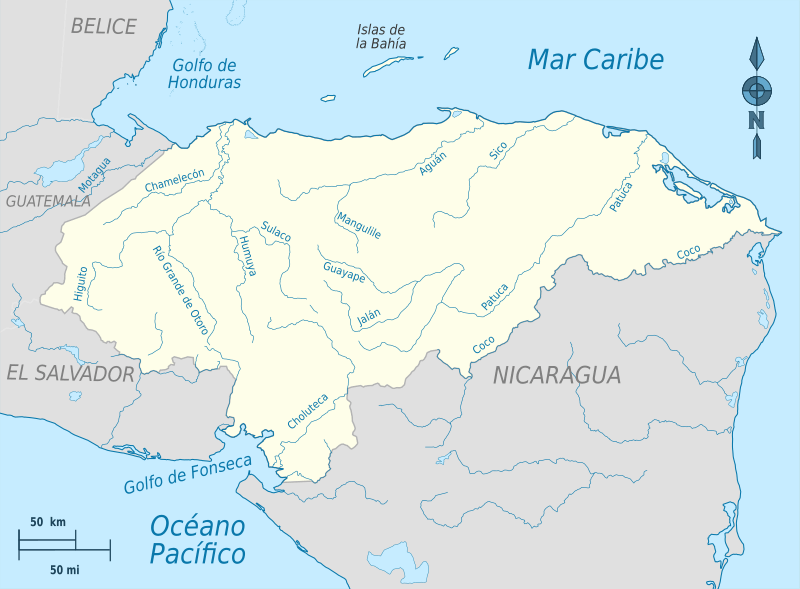
Hydrographic map of Honduras.
Notable Rivers
Honduras is home to several notable rivers that play a significant role in the country's geography, ecology, and economy. These rivers traverse diverse landscapes, from highland regions to lowland plains, and provide essential water resources for agriculture, transportation, and biodiversity.
Patuca River: The Patuca River in northeastern Honduras is almost 500 km (310 mi) long. It is the longest river in Honduras and the second largest in Central America. It originates in the eastern part of the country and flows northeastward through dense rainforests before reaching the Caribbean Sea. It drains 23,900 sq km (9,200 sq mi). The Patuca River basin is part of the Mesoamerican Biological Corridor, an area of incredible biodiversity.
Chamelecón River: The Chamelecón River is the second-longest river in Honduras, with a length of 320 km (199 mi). The river flows from the western highlands of Honduras to the Gulf of Fonseca. The Chamelecón River is an essential source of water for the city of San Pedro Sula.
Aguan River: The Aguan River is located in northeastern Honduras and is approximately 290 km (180 mi) long. It flows from the central highlands and empties into the Caribbean Sea. The Aguan River is significant for its agricultural importance, particularly in producing African palm oil and other crops in the surrounding region.
Ulúa River: The Ulúa River is one of Honduras's longest and most important rivers, stretching approximately 250 km (155 mi). It originates in the central highlands near Lake Yojoa and flows northward to the Caribbean Sea, passing through fertile valleys and agricultural areas. The Ulúa River is vital for irrigation and is a significant transportation route for commerce and trade.
Choluteca River: The Choluteca River is another major river in Honduras, with a length of around 200 km (124 mi). It originates in the southern highlands and flows southward before reaching the Pacific Ocean. The river is crucial in providing water resources for agriculture and supporting various communities along its banks.
Coco River (Segovia River): The Coco River, also known as the Segovia River, forms a natural border between Honduras and Nicaragua. It is one of the longest rivers in Central America, with a total length of about 680 km (422 mi). The Coco River runs through the Mosquito Coast's remote and dense rainforests, offering unique ecotourism and exploration opportunities.
Guayape River: The Guayape River is located in eastern Honduras and flows approximately 230 km (143 mi) before joining the Ulúa River. It is a significant waterway for transportation and provides water resources for agriculture and communities in the region.
Goascoran River: The Goascoran River is located in southern Honduras. It flows from the mountains to the Gulf of Fonseca and is an essential water source for the city of Choluteca.
Cuero y Salado River: The Cuero y Salado River is located in western Honduras. It flows from the mountains to the Gulf of Fonseca and is an essential water source for Tegucigalpa.
